Household Hacks: Unlock the secrets to a simpler, more efficient home life! Ever feel like your to-do list is a mile long and you’re constantly battling clutter and chaos? I know I have! For centuries, resourceful individuals have been developing clever shortcuts and ingenious solutions to everyday problems. Think about it – our grandmothers and great-grandmothers were masters of making do, repurposing items, and finding creative ways to save time and money. Their wisdom lives on in the form of household hacks, and I’m here to share some of the best with you.
These aren’t just random tips; they’re tried-and-true methods that can truly transform your daily routine. From decluttering your living space to simplifying your cleaning chores, these household hacks will empower you to take control of your home and create a more peaceful, organized environment. Imagine spending less time on mundane tasks and more time doing the things you love. That’s the power of a good hack! So, get ready to discover a treasure trove of DIY solutions that will make your life easier, more enjoyable, and maybe even a little bit more fun.
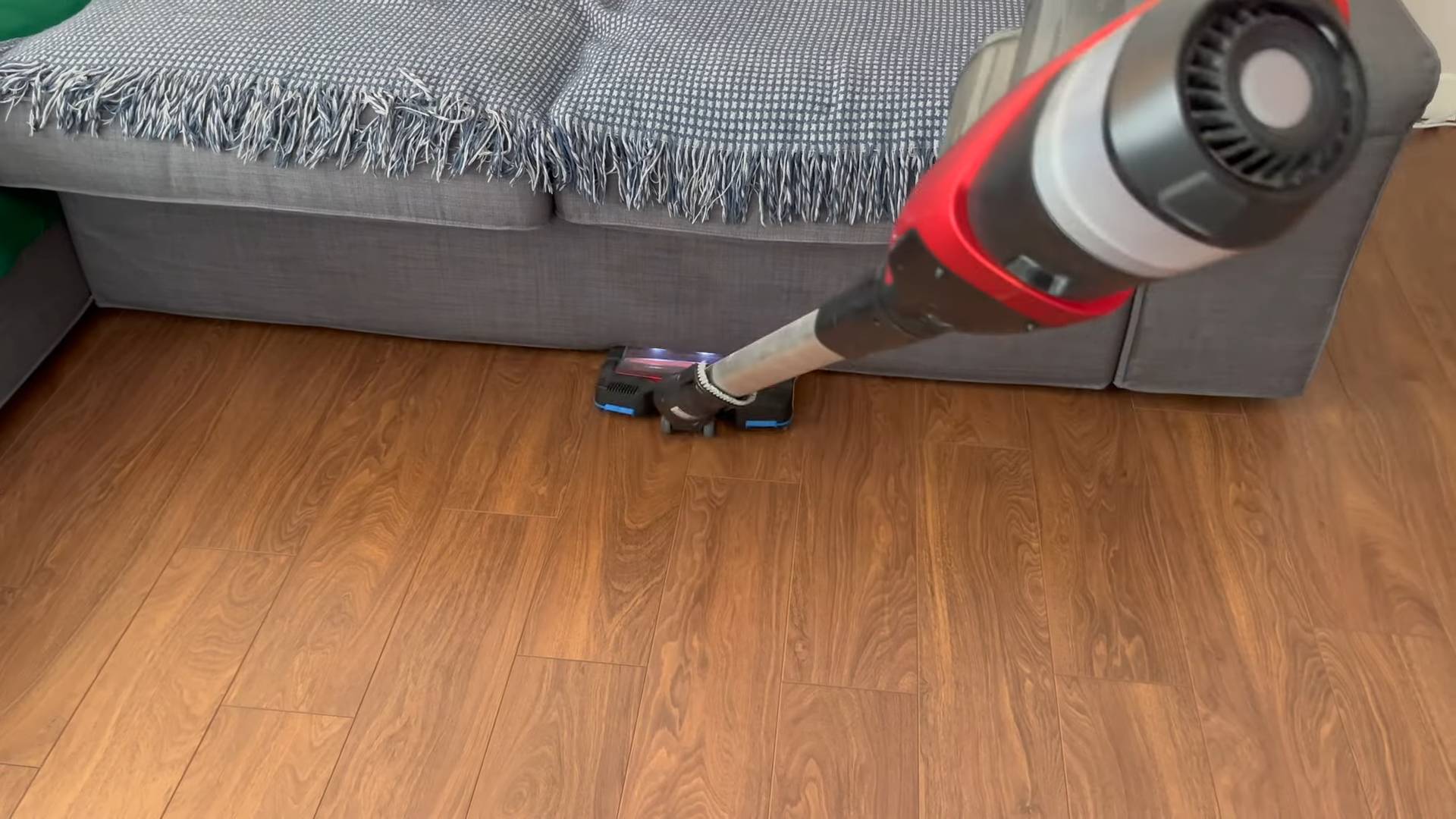
DIY: Transforming Old T-Shirts into Reusable Shopping Bags
Hey there, fellow DIY enthusiasts! I’m super excited to share one of my favorite upcycling projects with you: turning those old, forgotten t-shirts into sturdy and stylish reusable shopping bags. Not only is this a fantastic way to reduce waste and be kinder to the environment, but it’s also a fun and creative project that anyone can tackle, regardless of their sewing skills (or lack thereof!). Trust me, if I can do it, you can too!
What You’ll Need
Before we dive in, let’s gather our supplies. The beauty of this project is that you probably already have most of these things lying around:
* An old t-shirt (the bigger, the better for a larger bag!)
* Sharp scissors or a rotary cutter
* A ruler or measuring tape
* A fabric marker or pen (optional, but helpful for marking lines)
* Sewing machine (optional, but recommended for durability)
* Thread that matches your t-shirt (if using a sewing machine)
* Pins (if using a sewing machine)
* Iron and ironing board (optional, but helpful for crisp edges)
* Cardboard or a cutting mat (to protect your work surface)
Choosing Your T-Shirt
The key to a successful t-shirt bag is choosing the right t-shirt. Here’s what I look for:
* Size: A larger t-shirt will naturally create a larger bag. Think about what you’ll primarily use the bag for. Grocery shopping? A larger size is ideal. Carrying books? A medium size might be perfect.
* Material: Cotton or cotton blends work best. Avoid t-shirts that are too thin or flimsy, as they won’t be as durable.
* Design: Consider the design of the t-shirt. Do you want the design to be featured on the front of the bag? Or would you prefer a more subtle look?
* Condition: Check for any holes or stains. Small imperfections can often be avoided by strategically cutting around them, but large or prominent flaws might make the t-shirt unsuitable.
Step-by-Step Instructions
Alright, let’s get started! I’ve broken down the process into easy-to-follow steps.
1. Prepare Your T-Shirt: Lay your t-shirt flat on your work surface. Smooth out any wrinkles with your hands. If you want to be extra precise, you can iron it.
2. Cut Off the Sleeves: Using your scissors, carefully cut off both sleeves. Try to follow the existing seam as closely as possible for a clean, professional look. Don’t worry if it’s not perfect; we’re going for rustic charm here!
3. Widen the Neckline (Optional): If you want a wider opening for your bag, you can widen the neckline. I usually cut a shallow U-shape, removing a few inches of fabric. Be careful not to cut too much, or the straps might become too thin.
4. Create the Bottom Fringe (No-Sew Option): This is where the magic happens if you’re going the no-sew route!
* Turn the t-shirt inside out.
* Using your ruler and fabric marker (or just eyeballing it), draw a line across the bottom of the t-shirt, about 3-4 inches from the hem. This line will mark the top of your fringe.
* Now, cut vertical strips from the bottom hem up to the line you just drew. Make each strip about 1 inch wide. The more strips you cut, the stronger your bag will be.
* Once you’ve cut all the strips, tie each pair of adjacent strips together in a tight knot. Make sure the knots are secure.
* Repeat this process, tying each pair of adjacent strips together again, creating a second row of knots. This will further reinforce the bottom of the bag.
* Turn the bag right side out. You now have a fringed bottom!
5. Sew the Bottom Seam (Sewing Machine Option): If you have a sewing machine, this method will create a much more durable bag.
* Turn the t-shirt inside out.
* Pin the bottom hem together, making sure the edges are aligned.
* Using your sewing machine, sew a straight seam across the bottom of the t-shirt, about 1/2 inch from the edge.
* For extra strength, sew a second seam right next to the first one.
* Trim any excess fabric.
* Turn the bag right side out.
Reinforcing the Straps (Optional but Recommended)
The straps are the most vulnerable part of the bag, so I highly recommend reinforcing them, especially if you plan on carrying heavy items.
1. Sewing Machine Reinforcement:
* Fold the raw edges of the armholes (where the sleeves used to be) inward, about 1/2 inch.
* Pin the folded edges in place.
* Sew a straight seam along the folded edges, securing them.
* For extra strength, sew a second seam right next to the first one.
2. No-Sew Reinforcement (Fabric Glue):
* Fold the raw edges of the armholes inward, about 1/2 inch.
* Apply a generous amount of fabric glue along the folded edges.
* Press the edges firmly together and hold for a few seconds until the glue sets.
* Let the glue dry completely according to the manufacturer’s instructions.
Adding Embellishments (Optional)
Now for the fun part! You can personalize your bag with all sorts of embellishments. Here are a few ideas:
* Fabric Paint: Add your own designs, patterns, or quotes using fabric paint.
* Iron-On Transfers: Iron-on transfers are a quick and easy way to add images or logos to your bag.
* Buttons and Beads: Sew on buttons, beads, or other embellishments for a unique and textured look.
* Embroidery: If you’re feeling crafty, try embroidering a design onto your bag.
* Patches: Sew on patches to add a touch of personality.
Tips and Tricks
* Use a rotary cutter and cutting mat for precise cuts. This will give your bag a more professional look.
* If you’re using a sewing machine, use a ballpoint needle. This type of needle is designed for knit fabrics and will prevent skipped stitches.
* Test your fabric paint or glue on a scrap of fabric before applying it to your bag. This will ensure that the color and consistency are what you expect.
* Don’t be afraid to experiment! This is your chance to get creative and make a bag that’s truly unique.
* Wash your t-shirt before you start. This will help to remove any sizing or finishes that could interfere with the glue or paint.
* If you’re making multiple bags, consider using a template. This will help you to ensure that all of your bags are the same size and shape.
* For heavier items, consider adding a reinforced bottom. You can do this by cutting a piece of cardboard to fit the bottom of the bag and covering it with fabric.
* If you’re using a t-shirt with a graphic design, try to center the design on the front of the bag. This will make the bag look more balanced and visually appealing.
* Have fun! This is a great way to recycle old t-shirts and create something useful and stylish.
Troubleshooting
* My fringe is uneven: Don’t worry! Just trim the longer strips to match the shorter ones.
* My knots are coming undone: Make sure you’re tying the knots tightly. You can also add a dab of fabric glue to each knot for extra security.
* My sewing machine is skipping stitches: Try using a ballpoint needle and adjusting the tension on your sewing machine.
* My fabric paint is bleeding: Use a fabric paint that’s specifically designed for knit fabrics. You can also try applying a primer to the fabric before painting.
* My glue isn’t holding: Make sure you’re using a fabric glue that’s designed for the type of fabric you’re using. You can also try clamping the pieces together while the glue dries.
Final Thoughts
And there you have it! A stylish and eco-friendly reusable shopping bag made from an old t-shirt. I hope you enjoyed this tutorial and that you’re inspired to give it a try. Remember, the best part about DIY projects is that you can customize them to your own taste and needs. So, grab an old t-shirt, get creative, and have fun! Happy crafting!
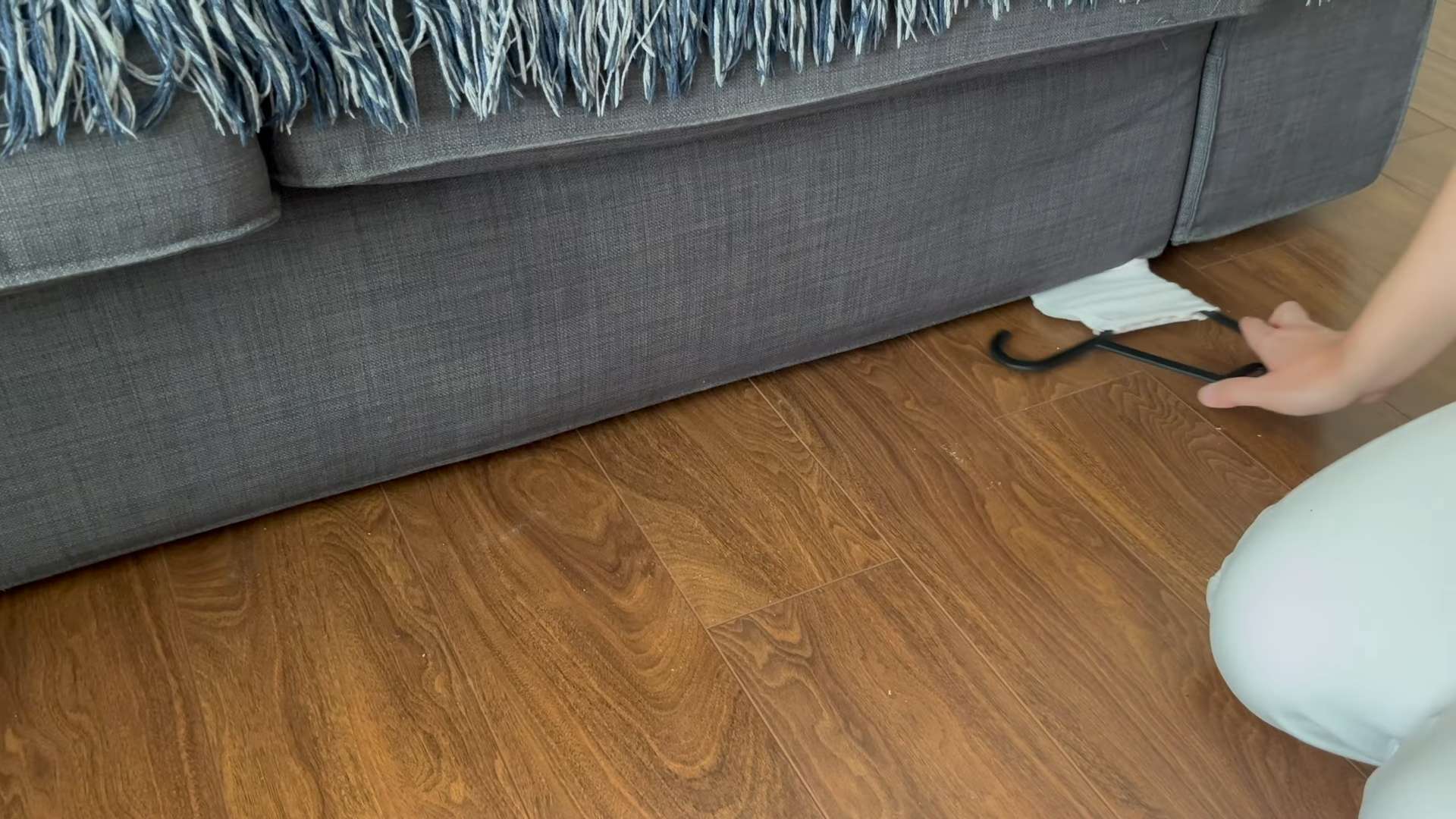
Conclusion
So there you have it! This simple yet effective DIY trick, focusing on everyday household hacks, is more than just a time-saver; it’s a game-changer for anyone looking to streamline their chores and reclaim their precious free time. We’ve shown you how to take readily available items and transform them into powerful tools for a cleaner, more organized home.
Why is this a must-try? Because it’s economical, eco-friendly, and empowering. You’re reducing waste by repurposing items you already own, saving money on expensive store-bought alternatives, and gaining a sense of accomplishment by creating something useful with your own two hands. Plus, it’s incredibly satisfying to see how a little ingenuity can make such a big difference in your daily routine.
But the beauty of DIY lies in its adaptability. Feel free to experiment with variations to suit your specific needs and preferences. For example, if you’re tackling stubborn grease stains, consider adding a few drops of essential oil, like lemon or orange, for an extra boost of cleaning power and a refreshing scent. Or, if you’re looking for a gentler solution for delicate surfaces, dilute the mixture with more water. The possibilities are endless!
Don’t be afraid to get creative and personalize these household hacks to fit your lifestyle. Perhaps you can adapt the cleaning solution for use in a spray bottle for easier application, or maybe you can find a unique way to store your homemade cleaning supplies for maximum convenience. The key is to have fun and discover what works best for you.
We wholeheartedly encourage you to give these DIY tricks a try. You might be surprised at how easy and effective they are. And once you’ve experienced the joy of a cleaner, more organized home, we’d love to hear about it! Share your experiences, tips, and variations in the comments below. Let’s build a community of DIY enthusiasts who are passionate about making their homes a haven of cleanliness and efficiency. Your insights could inspire others to embrace the power of DIY and transform their own lives. So go ahead, roll up your sleeves, and get ready to experience the magic of these simple yet transformative household hacks. You won’t regret it! Let us know what you think and how you’ve adapted these ideas to fit your own needs. We are eager to learn from your experiences and build a richer understanding of how to make our homes cleaner and more efficient.
Frequently Asked Questions (FAQ)
Q: Are these DIY household hacks safe for all surfaces?
A: While many of these hacks utilize natural ingredients, it’s always best to test them on an inconspicuous area first, especially on delicate surfaces like wood, marble, or painted walls. Different materials react differently to various cleaning agents, so a spot test will help you avoid any potential damage or discoloration. For example, vinegar, while a powerful cleaner, can be too acidic for certain types of stone. Similarly, abrasive cleaners should be avoided on surfaces that scratch easily. Always err on the side of caution and research the specific cleaning requirements of your surfaces before applying any DIY solution.
Q: How long will these DIY cleaning solutions last?
A: The shelf life of your homemade cleaning solutions will depend on the ingredients used. Solutions containing fresh ingredients, like lemon juice or herbs, will generally have a shorter shelf life than those made with shelf-stable ingredients like vinegar or baking soda. As a general rule, it’s best to use your DIY cleaning solutions within a few weeks to a month for optimal effectiveness. Store them in airtight containers in a cool, dark place to prolong their shelf life. If you notice any changes in color, odor, or consistency, it’s best to discard the solution and make a fresh batch.
Q: Can I use essential oils in these DIY household hacks?
A: Absolutely! Essential oils can add a pleasant fragrance and enhance the cleaning power of your DIY solutions. Many essential oils, such as tea tree, lavender, lemon, and eucalyptus, have antibacterial, antifungal, and antiviral properties. However, it’s important to use essential oils safely and responsibly. Always dilute them properly before use, and avoid using them on surfaces that may be damaged by oils. Also, be mindful of potential allergies or sensitivities. If you’re pregnant or have any underlying health conditions, consult with a healthcare professional before using essential oils.
Q: What are some alternatives to vinegar in these DIY recipes?
A: If you’re not a fan of the smell of vinegar, or if you’re looking for a gentler alternative, there are several options you can try. Lemon juice is a great natural cleaner and deodorizer, and it has a pleasant citrus scent. Baking soda is another versatile ingredient that can be used to scrub surfaces and absorb odors. For tougher stains, you can try using hydrogen peroxide, but be sure to test it on an inconspicuous area first, as it can have a bleaching effect.
Q: How can I make these DIY household hacks more eco-friendly?
A: There are several ways to make your DIY cleaning routine even more environmentally friendly. Start by using reusable containers to store your cleaning solutions. Instead of paper towels, opt for reusable cloths or sponges. When purchasing ingredients, choose organic and sustainably sourced options whenever possible. And be mindful of the amount of water you use when cleaning. By making these small changes, you can significantly reduce your environmental impact and create a more sustainable home.
Q: What are some safety precautions I should take when making and using these DIY household hacks?
A: Safety should always be a top priority when making and using DIY cleaning solutions. Always wear gloves to protect your skin from irritation. Avoid mixing different cleaning agents together, as this can create dangerous fumes. Keep your cleaning solutions out of reach of children and pets. And be sure to label your containers clearly so that you don’t accidentally use the wrong solution. If you experience any adverse reactions, such as skin irritation or breathing difficulties, discontinue use immediately and consult with a healthcare professional.
Q: How do I adapt these household hacks for specific cleaning tasks, like cleaning the oven or removing hard water stains?
A: The beauty of DIY is its adaptability! For oven cleaning, create a paste of baking soda and water, apply it to the oven interior, let it sit overnight, and then scrub clean. For hard water stains, vinegar is your best friend. Soak affected areas with vinegar, let it sit for a while, and then scrub away the mineral deposits. You can also add a bit of lemon juice for extra cleaning power and a fresh scent. Remember to always test your solutions on a small, hidden area first to ensure they don’t damage the surface.

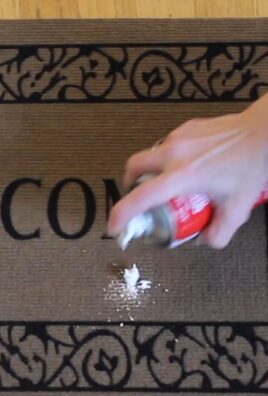
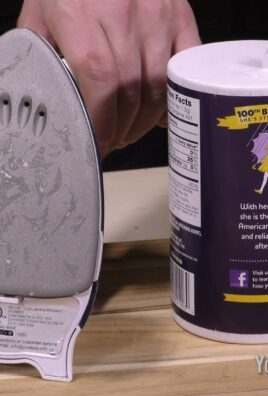
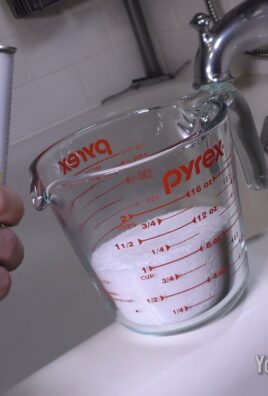
Leave a Comment